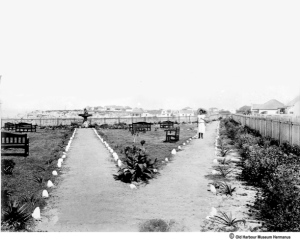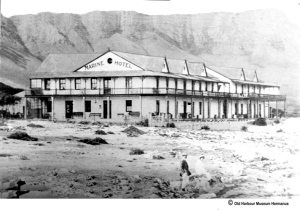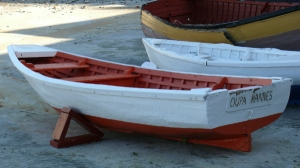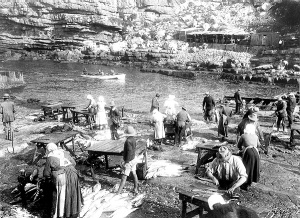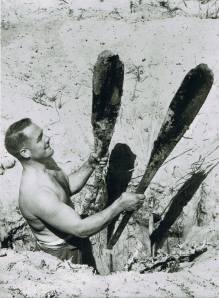 Sixty-five years ago, a famous Afrikaner sportsman turned Nazi after attending the 1936 Olympics in Berlin. Heavyweight boxer, Robey Leibbrandt, met and became mesmerized by Adolf Hitler, and the triumphant rise of Hitler’s National Socialists completely took in the young Afrikaner. Hitler’s aides began to seduce Leibbrandt into acting on their behalf in South Africa.
Sixty-five years ago, a famous Afrikaner sportsman turned Nazi after attending the 1936 Olympics in Berlin. Heavyweight boxer, Robey Leibbrandt, met and became mesmerized by Adolf Hitler, and the triumphant rise of Hitler’s National Socialists completely took in the young Afrikaner. Hitler’s aides began to seduce Leibbrandt into acting on their behalf in South Africa.
Strangely enough, both central figures in the ensuing dramatic events that almost changed the course of South African history, lived in Hermanus for brief periods. General Jan Smuts, famous statesman and war-time prime minister of South Africa loved to spend short resting holidays in the village, and the man who almost assassinated him, Robey Leibbrandt, lived here for a short time after his release from prison in 1948.
Leibbrandt was extensively trained in sabotage and espionage, and also underwent rigorous training as a Stormtrooper in Germany. After the outbreak of war, he was appointed to spearhead Operation Weissdorn – the overthrow of Jan Smut’s coalition government and the establishment of a National Socialist republic in South Africa. He was secretly landed from a French yacht on the West Coast from where he made his way inland to begin his task.
Leibbrandt tried to assume control of the Ossewa Brandwag and planned the assassination of General Smuts. When the authorities learned of his plans, top-policeman Jan Taillard was appointed to flush out Leibbrandt. He was trapped in a daring action and received the death sentence at the ensuing court hearing. But Robey Leibbrandt did not die on the gallows. Two days before Christmas he was informed that the Smuts Government had commuted his sentence to life imprisonment. “How can I hang the son of such a courageous Boer warrior?” Smuts had asked. In gaol he often resisted authority. Once he had to be removed from his cell by being incapacitated by tear gas. When Dr Malan’s party won the 1948 election, Leibbrandt was released.
He lived in Hermanus not long after his release, staying in Magnolia street – several residents knew him in those years. He helped Kaiser de Kock with boxing lessons. Boetie de Villiers told me how Robey liked to visit them and enjoyed his mother’s fresh home baked bread. Douglas McFarlane of Fynbos Park knew Leibbrandt well socially and while they trained as policemen in Pretoria. He remembers that Robey was a health fanatic and used to sleep on the floor.
Not much was heard of the Rebel leader afterwards. He tried his hand at business ventures in various small towns, failing to gain significant support for an Anti-Communist Front. He died in obscurity at Ladybrand of a heart attack in 1966.
Story and copyright: S.J. du Toit

